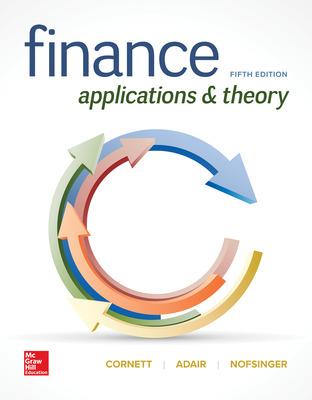Answered step by step
Verified Expert Solution
Question
1 Approved Answer
Worksheet 10.1_Ch 10_FIN 333 Ernie Chu, currently age 27, has just taken a job as an instructor at a large public university. His starting salary
Worksheet 10.1_Ch 10_FIN 333
- Ernie Chu, currently age 27, has just taken a job as an instructor at a large public university. His starting salary is $50,000, and he has been told that salary increases have averaged 4 percent per year. After looking at the benefits package, he learns that the state recently changed its retirement plan from a defined-benefit plan, which paid retirees up to 70 percent of final salary with cost-of-living adjustments, to a defined-contribution plan. Participants contribute 8 percent of their salary to the plan, and the state contributes another 9 percent, all of which can be invested in a variety of mutual funds. Assume that Ernie and his employer contribute a combined 17 percent of his salary each year until he retires. He also finds that his employer is exempt from Social Security, so he wont have to pay the retirement portion of the payroll tax. Assume that Ernie works for a total of 40 years.
- How much is his salary at years 10, 20, 30, and 40, respectively, if salaries at the university continue to grow at 4 percent per year?
- If Ernie had been able to participate in the defined-benefit plan and was eligible to receive the maximum benefit, how much would it be?
- Assuming that he started work on January 1, what is Ernies first-year contribution to his retirement plan, including funding from both himself and his employer?
- Estimate the amount Ernie will have in his retirement account in 40 years, assuming that his investments earn an average rate of 4 percent per year (the same as the rate of increase in his contributions to the account) and he makes beginning-of-year contributions. To do this, you can use the following shortcut: if a contribution increases each year at the same rate as the annual investment return on the account, the future value of the account can be calculated as: FV = n Initial PMT (1 + i)n (for beginning-of-year contributions) and FV = n x initial PMT x (1+i)n1 (for end-of-year contributions).
- Assuming that Ernie will live for 25 years in retirement and will continue to earn 4 percent on his investments, what constant level of income could he generate if he had retirement wealth of $1.6 million and wants to spend down both interest and principal? What difference would it make if he wants to be able to increase his withdrawals by 3 percent each year for inflation?
Step by Step Solution
There are 3 Steps involved in it
Step: 1

Get Instant Access to Expert-Tailored Solutions
See step-by-step solutions with expert insights and AI powered tools for academic success
Step: 2

Step: 3

Ace Your Homework with AI
Get the answers you need in no time with our AI-driven, step-by-step assistance
Get Started


